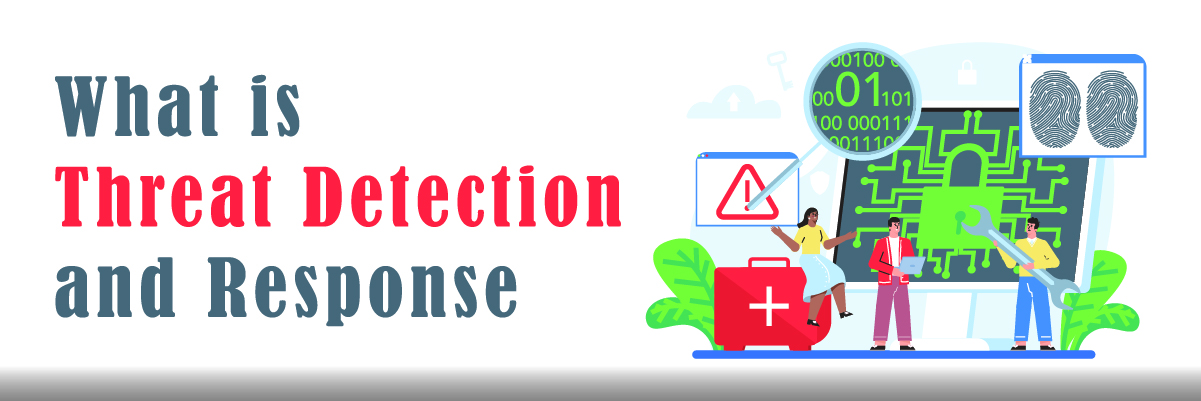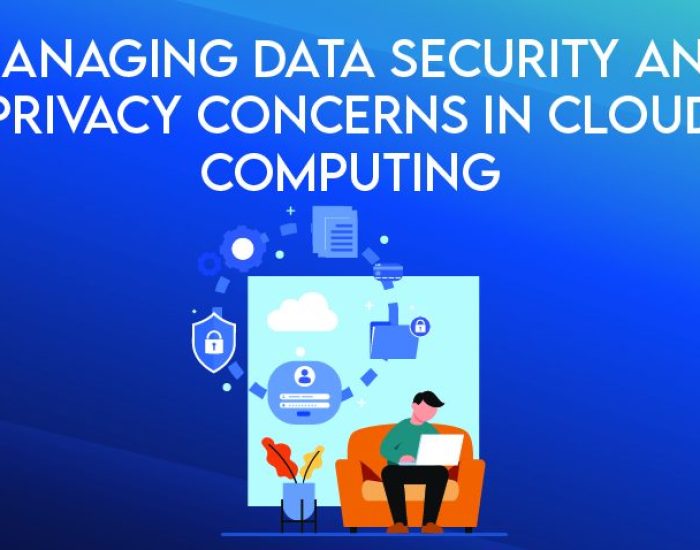What is Threat Detection and Response
Threat detection and response are critical aspects of cybersecurity. In today’s digital world, cyber threats are becoming increasingly sophisticated and complex, making it challenging for businesses to protect themselves against them. As a result, organizations need to have a comprehensive threat detection and response strategy in place. This blog will delve into the fundamental concepts of threat detection and response, discussing the different types of threats and response techniques and exploring why businesses must have these strategies in place.
Additionally, the blog will outline best practices for implementing an effective threat detection and response plan. By the end of this blog, readers will have a deeper understanding of the importance of threat detection and response and be equipped with the knowledge to implement an effective strategy to protect their organizations against cyber threats.
What is Threat Detection?
Threat detection refers to identifying potential security threats or attacks that could compromise an organization’s information, assets, or infrastructure. Threat detection aims to identify and mitigate these risks before they can cause significant harm.
There are various types of threats that organizations need to be aware of, including:
- Malware: Malware is software designed to harm or compromise a computer system or network, such as viruses, trojans, and ransomware.
- Phishing: Phishing refers to tricking users into providing sensitive information, such as login credentials or financial information, through fraudulent emails or websites.
- Insider threats: Insider threats occur when an employee or contractor with authorized access to an organization’s systems intentionally or unintentionally causes harm, such as stealing sensitive data or introducing malware.
- Advanced Persistent Threats (APTs): APTs are sophisticated and targeted attacks designed to gain unauthorized access to an organization’s systems and remain undetected for extended periods, allowing attackers to steal data or cause damage over an extended period.
To detect these threats, organizations use various techniques, such as:
- Endpoint Detection and Response (EDR): EDR tools monitor and detect threats on endpoints, such as laptops, desktops, and servers, by analyzing endpoint behavior and identifying anomalous activity.
- Network Monitoring: Network monitoring tools monitor network traffic to identify potential threats, such as suspicious data transfer patterns or unauthorized access attempts.
- Log Analysis: Tools analyze system logs to identify abnormal behavior, such as many failed login attempts or unusual network activity.
Overall, threat detection is an essential component of a comprehensive cybersecurity strategy, as it allows organizations to identify and mitigate potential risks before they can cause significant harm.
What is Threat Response?
Threat response refers to taking action to contain, mitigate, and remediate security incidents and cyber-attacks identified through threat detection. The goal of threat response is to minimize the attack’s impact and restore normal operations as quickly as possible.
There are various types of threat response techniques that organizations can use, including Incident Response Planning, Threat Hunting, Patch Management, and Forensic Analysis.
Overall, threat response is a critical component of a comprehensive cybersecurity strategy, as it allows organizations to respond quickly to security incidents and minimize the impact of a potential breach. Organizations can improve their cybersecurity posture and protect their sensitive information, infrastructure, and reputation by implementing effective threat response techniques.
Why is Threat Detection and Response Important?
Threat detection and response are essential for organizations to protect their sensitive information, infrastructure, and reputation. Here are some of the key reasons why threat detection and response are important:
- Preventing data breaches: With cyber-attacks becoming increasingly sophisticated and prevalent, organizations are at a high risk of data breaches. Effective threat detection and response strategies can help identify potential attacks before they can cause significant damage and prevent unauthorized access to sensitive data.
- Minimizing damage caused by cyber attacks: Even with the best prevention measures in place, it is still possible for cyber attacks to occur. Effective threat response techniques can help contain and mitigate the impact of an attack, minimizing the damage caused and reducing the recovery time.
- Reducing downtime and costs: Cyber attacks can cause significant downtime and financial losses for organizations. By quickly detecting and responding to security incidents, organizations can minimize downtime and reduce the economic impact of an attack.
- Meeting compliance requirements: Many industries are subject to regulatory requirements that mandate the implementation of effective threat detection and response strategies. Failure to comply with these regulations can result in significant fines and legal consequences.
Effective threat detection and response are critical for maintaining a strong cybersecurity posture and protecting an organization’s assets, reputation, and customers’ trust. By implementing these strategies, organizations can stay ahead of potential threats and minimize the impact of security incidents.
 Threat Detection and Response Best Practices
Threat Detection and Response Best Practices
Implementing an effective threat detection and response strategy requires careful planning, execution, and continuous improvement. Here are some best practices for organizations to consider:
- Create a comprehensive security plan: A comprehensive security plan should outline the organization’s security policies, procedures, and controls. The plan should also identify potential threats and vulnerabilities and establish a framework for implementing and maintaining adequate security measures.
- Regularly update security measures: Cyber threats constantly evolve, and security measures must keep pace. Organizations should regularly update their security measures, such as firewalls, antivirus software, and intrusion detection systems, to ensure they remain effective.
- Invest in threat detection and response tools and services: Organizations should consider investing in threat detection and response tools and services that can help automate the detection and response process, such as Security Information and Event Management (SIEM) tools, intrusion detection systems, and managed security services.
- Provide employee training and education: Employees are often the weakest link in an organization’s security posture. Regular security training and education can help employees understand the importance of security, recognize potential threats, and follow best practices to prevent security incidents.
- Establish an incident response plan: An incident response plan should be developed and tested regularly to ensure it effectively responds to security incidents. The plan should include procedures for identifying the incident, containing it, mitigating the impact, and restoring normal operations.
- Conduct regular security assessments: Regular security assessments can help identify vulnerabilities and weaknesses in an organization’s systems and processes. These assessments can include vulnerability scans, penetration testing, and social engineering testing.
By implementing these best practices, organizations can improve their threat detection and response capabilities, reduce the risk of cyber attacks, and protect their sensitive information, infrastructure, and reputation.
Conclusion
Threat detection involves identifying potential security incidents and attacks, while threat response involves taking action to contain, mitigate, and remediate these incidents. Effective threat detection and response requires careful planning, execution, and continuous improvement, including creating a comprehensive security plan, investing in threat detection and response tools and services, providing employee training and education, establishing an incident response plan, and conducting regular security assessments.
By implementing these best practices, organizations can improve their overall cybersecurity posture, reduce the risk of cyber attacks, minimize the damage caused by security incidents, and protect their sensitive information, infrastructure, and reputation. Effective threat detection and response are critical components of a comprehensive cybersecurity strategy, and organizations must prioritize them to stay ahead of potential threats and protect their valuable assets.
Protected Harbor’s AI-powered managed prevention component monitors an organization’s network, endpoints, and applications, looking for suspicious activity or behavior. This includes monitoring for signs of malware, phishing attempts, and other types of cyber threats. When a potential threat is identified, the system automatically takes action to prevent it from causing any damage.
With our 24×7 monitoring and response capabilities, we provide organizations the peace of mind that comes from knowing they are protected against potential threats, no matter when they occur. Contact our security expert today for penetration testing with a threat detection and response strategy tailored to your business.






